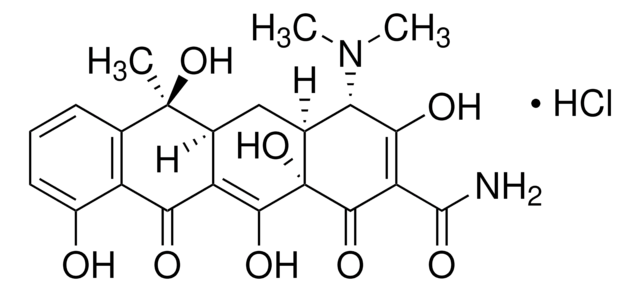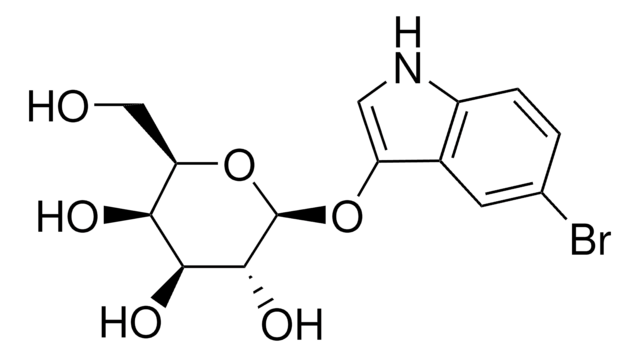Documentos clave
T7660
Tetracycline hydrochloride
powder, BioReagent, suitable for cell culture
Sinónimos:
Tetracycline HCL
About This Item
Productos recomendados
product line
BioReagent
Quality Level
form
powder
storage condition
(Keep container tightly closed in a dry and well-ventilated place. Keep in a dry place.)
technique(s)
cell culture | mammalian: suitable
impurities
endotoxin, tested
color
yellow
mp
220-223 °C (lit.)
antibiotic activity spectrum
Gram-negative bacteria
Gram-positive bacteria
mode of action
protein synthesis | interferes
¿Está buscando productos similares? Visita Guía de comparación de productos
Categorías relacionadas
1 of 4
Este artículo | T8032 | T3383 | PHR1041 |
|---|---|---|---|
| mode of action protein synthesis | interferes | mode of action protein synthesis | interferes | mode of action protein synthesis | interferes | mode of action - |
| technique(s) cell culture | mammalian: suitable | technique(s) - | technique(s) - | technique(s) HPLC: suitable, gas chromatography (GC): suitable |
| Quality Level 200 | Quality Level 200 | Quality Level 200 | Quality Level 300 |
| product line BioReagent | product line - | product line - | product line - |
| form powder | form powder | form powder | form - |
General description
Application
Biochem/physiol Actions
Mode of Resistance: The effects are inactivated via a loss of cell wall permeability.
Antimicrobial spectrum: Includes a wide range of antimicrobial activity against gram-positive and gram-negative bacteria.
Caution
Preparation Note
Other Notes
signalword
Warning
Hazard Classifications
Aquatic Acute 1 - Aquatic Chronic 2 - Eye Irrit. 2 - Repr. 2 - Skin Irrit. 2 - STOT SE 3
target_organs
Respiratory system
Storage Class
11 - Combustible Solids
wgk_germany
WGK 2
flash_point_f
Not applicable
flash_point_c
Not applicable
ppe
dust mask type N95 (US), Eyeshields, Gloves
Certificados de análisis (COA)
Busque Certificados de análisis (COA) introduciendo el número de lote del producto. Los números de lote se encuentran en la etiqueta del producto después de las palabras «Lot» o «Batch»
¿Necesita un COA de muestra?
Esto es un Certificado de análisis (COA) de muestra y es posible que no represente un lote de fabricación reciente para este producto específico.
¿Ya tiene este producto?
Encuentre la documentación para los productos que ha comprado recientemente en la Biblioteca de documentos.
Los clientes también vieron
Nuestro equipo de científicos tiene experiencia en todas las áreas de investigación: Ciencias de la vida, Ciencia de los materiales, Síntesis química, Cromatografía, Analítica y muchas otras.
Póngase en contacto con el Servicio técnico











